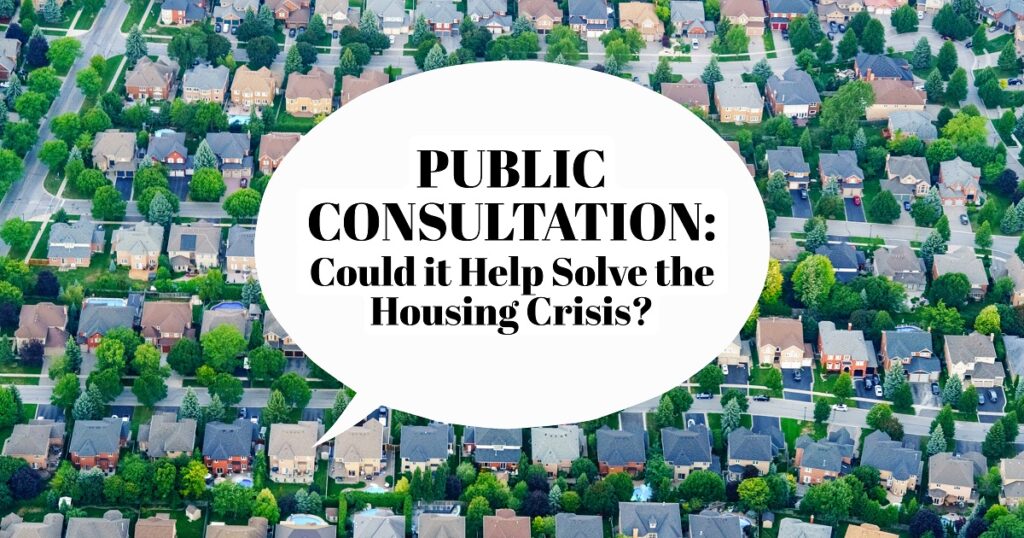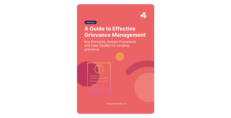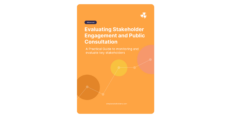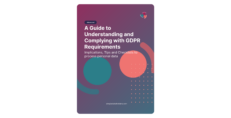Could Public Consultation Help Solve the Housing Crisis?

One of the key issues facing many parts of the world in 2023 (and for the foreseeable future) is the housing crisis.
Illustrating the scale and immediacy of the issue is The World Bank’s estimate that some 1.6 billion people will be impacted by the global housing shortage by 2025.
The overarching issue for many areas is that the rise in housing costs have outpaced any rise in income, leading to a lack of affordable homes in various regions, including the United States, Australia, New Zealand, India, Scotland, and Africa.
But how did we get here in the first place? And could public consultation have helped to prevent the housing crisis — and could it be part of the solution? Let’s take a deeper dive into the issues…
Why is There a Housing Crisis?

There are a number of factors contributing to the housing crisis in various regions. As you’ll soon see, it’s quite complex, with many of the issues spiralling into new issues.
The COVID-19 Pandemic & Cost of Building Homes
Most experts agree that the COVID-19 pandemic contributed as it led to challenges with sourcing materials and labour to build new houses. This contributed to rising housing costs, delays in new builds, and corresponding increases in overall costs to buy or rent homes. Other global labour and supply chain disruptions have also contributed to these rising costs and overall inflation.
Zoning Limitations & Attitudes
The rising cost of building new homes is also driven by limited land supply in many areas. In many cases, these limits are linked to lagging council approval processes and zoning limitations. On zoning, it’s worth mentioning the NIMBY (not-in-my-backyard) attitudes with many existing residents and homeowners (understandably) resistant to certain changes that might impact their property’s value or the characteristics of their neighborhood — even if these changes could lead to more affordable housing and benefit the community as a whole.
Social Distancing
Another contributing factor triggered by the COVID-19 pandemic is the demand for more space, social distancing, people needing a home office to work from, and fewer people living together. Census data in Australia showed that the average household size decreased from 2.6 people in 2016 to 2.5 people in 2021 (though this continues a pre-existing trend showing a gradual drop from 4.5 people per household in 1911). This trend means that even if populations remain stable, demand for housing will go up.
Economic Stimulus Measures & Building Business Impacts
Economic stimulus measures introduced in certain regions during the early part of the pandemic also play a role in the current situation. For instance, in Australia, the government announced HomeBuilder (and other state level grants), which stimulated the Australian housing market by delivering a package of incentives worth $50,000 or more, depending on the state and buyer situation. These led to something of a boom in demand for new housing — but builders could not keep up. Adding to this the rapid rise in material and labour costs to build new homes, many builders on fixed price contracts found themselves unable to cover the costs they’d committed to, leading to an increase in average time to build a house. In Australia this average was 11.7 months in 2022-23, up from 10.3 months in 2021-22. These challenges have led to more than 2,000 building companies in Australia entering liquidation in 2022-23, and as a result, buyer confidence has dropped — both of which is leading to even fewer new homes being built.
High Immigration
In some regions, the rate of immigration is also driving up demand for houses, far outpacing the rate of building new homes. Australia’s net overseas migration is expected to reach 650,000 between July 2022 and June 2024 — a significant population increase for a nation of 26 million people. Meanwhile, New Zealand gained a record net 110,000 migrants in the year to August 31, 2023 — an equally substantial number in a nation of 5 million people. Neither country is building enough new homes to accommodate the rapid increase in population.
Rise in Short-Term Accommodation
Another factor in many areas is the rise in short-term accommodation like AirBNB. Estimates suggest that close to 350,000 or around 4% of housing stock in Australia is (or was at some point) listed on Airbnb. In December 2023, nearly 50,000 Airbnb properties were listed in New Zealand. In light of record net migration in both countries, these numbers are not insignificant. Many homes that were previously full-time occupied by owners or renters now sit unoccupied for large parts of the year and are rented out at holiday rates to tourists and travellers.
Increasing Costs to Rent and Buy Homes
In many areas, the cost to rent and buy homes rose significantly from 2020 to 2023.
Average weekly rent in Australian capital cities was $494 in January 2020, but rose to $688 in November 2023. Likewise, average asking prices of residential properties for sale in Australian capital cities was $858K in January 2020 and reached $1.1M by late 2023.
Although this trend is perhaps more exaggerated in Australia, rising rents and property values are a common issue in many cities and regional areas around the world.
Rising Inflation and Stagnant Wage Growth
Meanwhile, rapidly rising inflation against relatively low wage growth has seen people’s buying power shrink. Many people are seeing a much larger portion of their income go towards accommodation, while also paying for significant increases for electricity, gas, fuel, vehicles, and food.
Homelessness

The housing crisis has led to substantial increases in homelessness for many regions. It’s tricky to measure homelessness, but the following estimates give an indication of the scale of the issue and how it is impacting even developed nations:
- Australia – At the most recent Census in 2021, there were 122,494 people experiencing homelessness, an increase of 5.2% since 2016
- New Zealand – Data from the 2018 Census estimated 102,100 people were facing homelessness in New Zealand
- UK – At the start of 2023, at least 271,000 people were recorded as homeless in England, with the number of people in temporary accommodation rising by 74% over the previous decade
- U.S. – In 2022, there were around 582,000 Americans experiencing homelessness
Note that some of the above data was taken from before the current housing crisis, so true impacts are likely worse.
Fewer People Downsizing Due to Risk
The high cost of housing may be making it harder for people to move on when their current housing is unsuitable. Difficulty in finding the next home and risk associated with being between homes is leading to renters and homeowners staying put for longer. This is a real issue when it leads to fewer people downsizing — which would free up space for families that need it.
Questions to Ask
The housing crisis is ongoing — and while many strategies are being explored and put into place, it begs some important questions, like:
- Could we have foreseen and avoided this situation?
- Could we avoid going down this track in future?
- And what should we be doing now to improve the situation?
We’re hardly experts in housing or economics, but our expertise in stakeholder engagement and public consultation is certainly relevant to the equation. And that brings us to a more specific question we can answer…
How Could Public Consultation Have Helped?

Many of the current issues with housing were set into motion at the start of the pandemic, with governments putting various policies and economic stimuli into place, along with public health messages like social distancing.
It’s fair to say that these actions were in response to a rapidly evolving situation with the intention of minimizing harm to the public.
What we’re seeing now is unintended consequences.
Could public consultation have helped to reveal these unintended consequences and helped to shape policy and messaging? Perhaps.
Is it reasonable to expect decision makers to engage with the public even during events that require a rapid response? Yes. Even if public consultation isn’t officially legislated as part of the policy change process, it makes a lot of sense to engage with the community. We know that public consultation can:
- Improve the quality of rules
- Improve compliance and reduce costs of reinforcing rules
- Provide more information on which to make policy decisions
- Help with better assessing impacts and costs
- Increase transparency and accountability
- Help with balancing opposing interests
- Foresee unintended effects
When applied to the housing crisis, surveying or interviewing key stakeholder groups could have revealed that adding economic stimuli would lead to a rise in demand for new housing to an unsustainable level, based on the number of people that would take advantage of the stimuli, the capacity of existing construction companies, the availability of materials, and zoning/approvals limitations.
Government groups may have discovered that messages to avoid contact with other people and work from home would lead many renters and homeowners to seek different types of housing and living arrangements (and potentially some people leaving the workforce early or changing careers). And they may have realized that an increase in local populations due to immigration would lead to weaker wage growth and greater demand for housing that would make existing housing affordability even worse.
Public consultation would not have solved every issue related to the housing crisis. But thorough consultation prior to taking action would have allowed decision makers to go in with their eyes open, and potentially avoided many of the contributing factors.
What Should Decision Makers Do Now?

Many ideas have been put forward to solve the housing crisis that appear to have merit. For instance, New Zealand has seen some success with increased housing density. Many people are calling for greater restrictions on Airbnb properties and alternative housing technologies to increase supply. And many governments are taking action in an attempt to curb inflation and its effects.
We’re not here to argue the merit of these approaches, though.
No matter how good a decision or policy appears at the outset, it’s always critical to consider the unintended consequences, risks, barriers, and potential impacts on all stakeholders. And that’s impossible to do without consulting with those stakeholders first.
Hopefully by now it’s clear to governments and decision makers that public consultation is key to solving the housing crisis and avoiding (or at least, lessening the impact of) future crises.
To help with untangling the mess of issues contributing to the housing crisis, decision makers must build more consultation into their processes.
For instance, this might include:
- Identifying all the potential stakeholders and groups that might have an influence on the situation, an interest in it, or be impacted by it
- Analyzing these groups to determine which stakeholders to consult with
- Requiring public consultation (and transparently reporting on this process to ensure accountability) before any decision is made
- Tracking the issues and concerns that emerge through public consultation
- Improving their systems and processes for more thorough stakeholder tracking, reporting, and analysis (of course, a tool like Simply Stakeholders would be ideal for this)
Learn More
If you’d like to explore more info related to this topic, check out our previous content on:




























